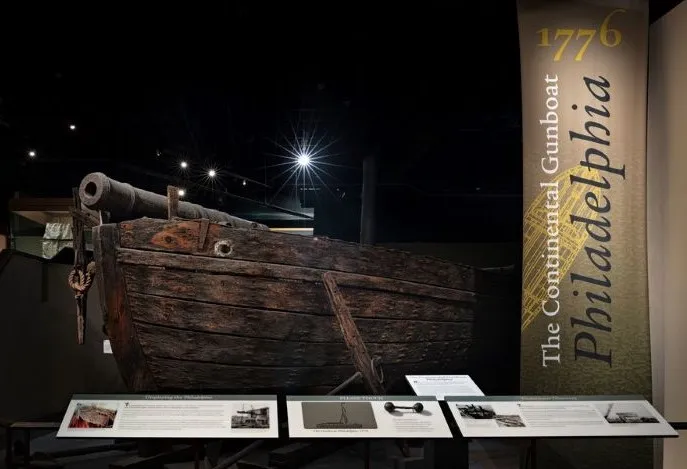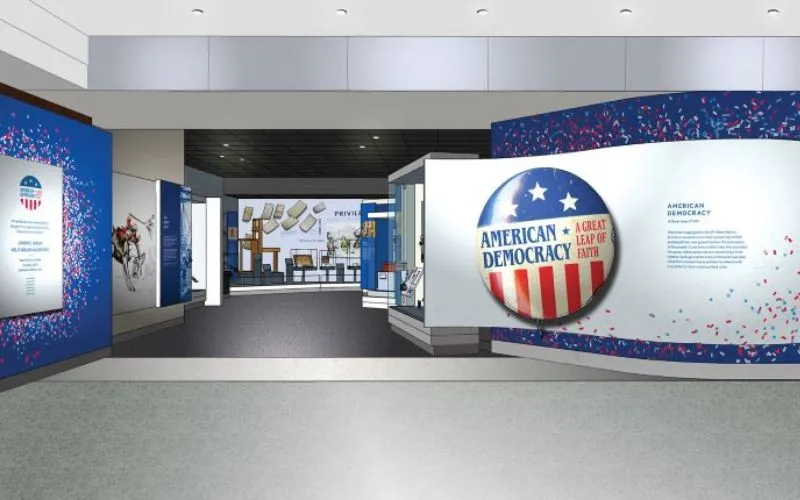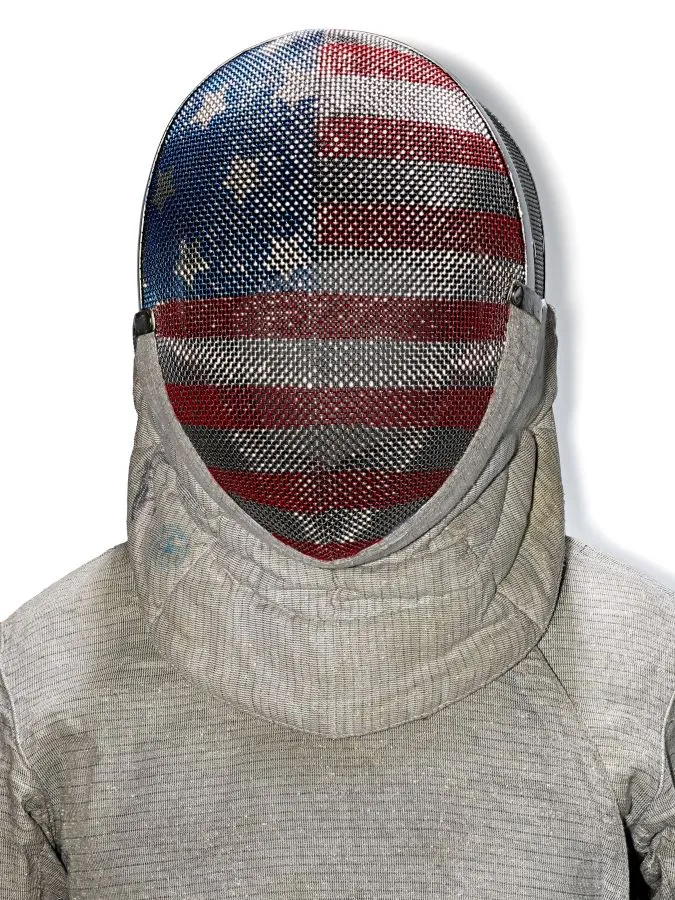NATIONAL MUSEUM OF AMERICAN HISTORY
Celebrating Independence Day and More July Happenings
Upcoming events at the National Museum of American History
/https://tf-cmsv2-smithsonianmag-media.s3.amazonaws.com/filer_public/41/c5/41c5ed7c-bacf-4aa9-a198-8f7c2a14c24e/july_ssb.jpg)
As the nation marks Independence Day and the world looks to the Paris Summer Olympic Games, the National Museum of American History is collecting from the 2024 Presidential campaign, highlighting objects that symbolize the nation’s democratic traditions and showcasing artifacts that represent athletic achievements in past Olympics.
NEW DISPLAY
Stanley
“Road Warriors/Guerreros de la carretera”
Landmark Object
Third Floor, East
Opens July 23
Stanley, the self-driving winner of a historic robotic vehicle race in 2005, will become the landmark object on the museum’s third floor east wing, connecting the museum’s military and political history galleries through a focus on interactions between defense sponsored innovation and political need. This blue Volkswagen Touareq competed in the 2005 Pentagon’s Defense Advances Research Projects Agency (DARPA) Grand Challenge robot race.

POLITICAL CAMPAIGN COLLECTING
Continuing a long-standing tradition at the museum to document the process of American democracy, museum political history curators will be collecting from the July and August national party conventions. For more information and to schedule media interviews, please visit the press release.
CELEBRATING DEMOCRACY
“The Star-Spangled Banner: The Flag That Inspired the National Anthem”
Second Floor Center
Ongoing
One of the most recognized symbols of the nation, the Star-Spangled Banner, is a must see when visiting the museum. An architectural representation of a waving flag—960 reflective tiles made of polycarbonate material—frames the entrance to the spectacular gallery.

Gunboat Philadelphia
Third Floor East
Ongoing
The Revolutionary War-era gunboat Philadelphia was built in summer 1776 under the direction of Brig. Gen. Benedict Arnold and the Continental Congress during the Revolutionary War, along with seven identical ships, in what is considered America’s first Navy. The fleet disrupted British plans to isolate New England from the rest of the Colonies during the summer and fall of 1776. On Oct. 11 of that year, the fleet met British forces on Lake Champlain. American forces were outnumbered and lost the two-day battle. The Philadelphia was badly damaged and sunk. After it sunk, the gunboat remained lost at the bottom of Lake Champlain until it was discovered in 1935, when the ship was recovered along with the original equipment and the cannon ball that issued the ship’s fatal blow. The boat was on display for tourists in the Lake Champlain region until it was moved to the National Museum of American History in 1961, just before the completion of the museum’s construction and eventual opening to the public in 1964. Due to its age and long submersion in the water, the gunboat is in critical need of conservation treatment to ensure its long-term preservation. Funded by a generous donation by Americana Corner and a Save America’s Treasures grant, the museum will begin the treatment in Fall 2024 and the public will be able to follow the ongoing work live at the museum. For more information, visit the press release.

American Democracy: A Great Leap of Faith (selected objects)
Second Floor West
Ongoing
“American Democracy: A Great Leap of Faith” explores the history of civic engagement, debate and compromise from the nation’s founding through today. Through objects such as the portable desk Thomas Jefferson used to write the Declaration of Independence, the chair Lincoln used to pen the Emancipation Proclamation, and the table on which Elizabeth Cady Stanton wrote the Declaration of Sentiments for women’s rights, the exhibition illuminates different generations’ continuing engagement with the American experiment of democracy.

Toussaint L’Overture’s Cane
A cane belonging to Toussaint L’Overture, a military and political leader in the Haitian Revolution. The revolution began as a slave revolt in the French colony of Saint-Domingue in 1791 and ended with emancipation and the founding of the free nation of Haiti in 1804. Nearly half a million enslaved people gained freedom. These events terrified U.S. slaveholders while they heartened African Americans. The United States did not recognize the independence of Haiti from France until 1862. A U.S. Department of State official acquired this cane there later in the 19th century.
Presentation Indian Moccasins
A pair of red, white and blue beaded moccasins featuring American flags gifted to Ulysses S. Grant by a delegation of Plains Indians during an 1870s peace conference in Washington, D.C. The design unites motifs and forms from both culture as a powerful statement of hopeful coexistence.
THE OLYMPICS
Various locations
Sports artifacts can be found throughout the museum, selected highlights below:
“Entertainment Nation”
Third Floor, West
Ongoing
“Entertainment Nation” will be the museum’s first-ever major exhibition showcasing its vast collections related to theater, music, sports, movie and television through the lens of how entertainment brings Americans together, shaping and providing a forum for important national conversations. These include discussions about politics, society, culture and what it means to be an American.
Fencing mask and Head Scarf
A fencing mask and head scarf worn by Ibtihaj Muhammad at the 2016 Rio Summer Olympic Games. The mask has a metal mesh face piece painted with an image of the American flag and is lined in red. The black cotton head scarf made her the first Muslim-American woman to wear a hajib while competing for the United States at the Olympic Games.

Tito Puente Timbales
A set of two drums, two cowbells and a stand, used by Tito Puente in the closing ceremonies of the 1996 Summer Olympic Games in Atlanta. The drums are customized with Olympic emblems.
“Artifact Walls”
First Floor, Center
Paralympic’s WCMX wheelchair
A WCMX wheelchair used by Aaron ‘Wheelz’ Fotheringham at the opening of the 2016 Paralympic Summer Games in Rio. The chair is neon green metal with chrome accents, a neon green plastic bucket section, and black rubber wheels. It also has a ‘Aaron/Wheelz’ sticker and a ‘Box Wheel Chair’ logo in white on the bucket of the chair. The chair was designed by Mike Box. The artifact is on display in the artifact wall cases that line the first floor.
VISITING
What to know:
The museum is open seven days a week, except Dec. 25, between 10 a.m. and 5:30 p.m. Admission is free, and passes are not required. For more information, go to https://americanhistory.si.edu/visit
Food: Summer Picnic and BBQ Favorites
The Eat at America’s Table Cafe is open for complete food and beverage service. Through Labor Day, Chef Kyre and his team will serve summer favorites, including Coffee & New Mexican Chile Rubbed Smoked Brisket; BBQ Yard Bird with a Sweet Peach & Bourbon Glaze; Cowboy Beans; plus sides, salads and desserts. The Leroy Neiman Jazz Cafe offers light lunch, including sandwiches and pastries, as well as hot and cold beverages. The Jazz Cafe serves Starbucks coffee. For more information, visit the website.
Bottled water is allowed in the museum. We recommend bringing a refillable water bottle for fountains.
Stores: Open daily from 10 a.m. to 5:30 p.m.
ABOUT THE MUSEUM
Through incomparable collections, rigorous research and dynamic public outreach, the National Museum of American History seeks to empower people to create a more just and compassionate future by examining, preserving and sharing the complexity of our past. The museum, located on Constitution Avenue N.W., between 12th and 14th streets, is open daily except Dec. 25 between 10 a.m. and 5:30 p.m. Admission is free. The doors of the museum are always open online and the virtual museum continues to expand its offerings, including online exhibitions, K–12 educational materials and programs. The public can follow the museum on social media via Instagram and Facebook. For more information, go to https://americanhistory.si.edu. For Smithsonian information, the public may call (202) 633-1000.

